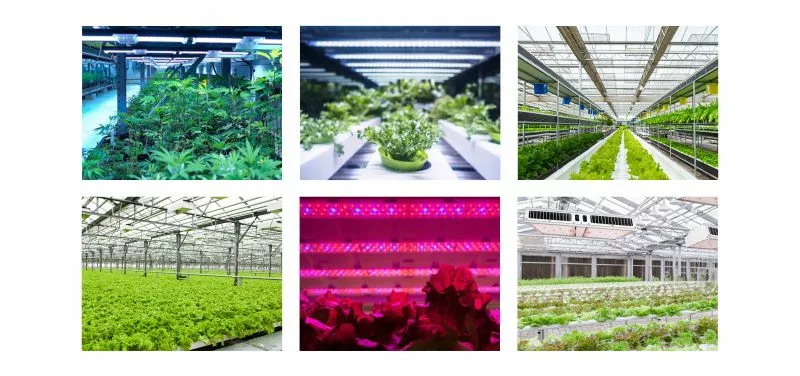LED plant lighting is a technology with broad development prospects, playing an increasingly important role in modern agricultural production. Choosing the right LED plant lighting products can effectively improve plant yield and quality, and promote the modernization of agriculture.
TUBU LED Plant Lights provide optimal growing conditions for all your favorite plants, indoors or in greenhouses. Our advanced LED plant lighting technology delivers the perfect spectrum of light to mimic natural sunlight, promoting healthy growth and vibrant blooms. Choose from a variety of plant light power options to suit the specific needs of your seedlings, vegetables, herbs, or flowers. TUBU's LED plant light spectrum is carefully designed to ensure your plants receive the essential light they crave for optimal photosynthesis and growth.
Best Growing Conditions for Plants
Most plants need light for photosynthesis, the process by which they convert light energy into food. The amount of light a plant needs varies depending on the species. Some plants, such as cacti and succulents, need a lot of bright light, while others, such as ferns and bromeliads, prefer lower light levels.
Water. Plants need water to survive and grow. The amount of water a plant needs depends on the species, the size of the plant, the climate, and the pot size. Underwatering can cause plants to wilt and die, while overwatering can lead to root rot.
Temperature. Plants thrive within a specific temperature range. Most houseplants prefer temperatures between 60 and 80 degrees Fahrenheit (15-27 degrees Celsius). However, some plants, such as orchids and citrus trees, have specific temperature requirements.
Humidity. Humidity refers to the amount of moisture in the air. Some plants prefer high humidity, while others can tolerate lower humidity levels. You can increase the humidity around your plants by grouping them together, placing them on a pebble tray filled with water, or using a humidifier.
Soil. Plants need well-draining soil that allows for proper aeration and prevents the roots from sitting in water. The best type of soil for a plant depends on the species. For example, cacti and succulents need a sandy soil mix that drains quickly, while ferns prefer a moist, well-draining potting mix.
Nutrients. Plants need nutrients to grow healthy and strong. Most potting mixes contain some nutrients, but you may need to fertilize your plants regularly, especially during the growing season.
By providing your plants with the right amount of light, water, temperature, humidity, soil, and nutrients, you can help them thrive.

LED Plant Lighting
LED plant lighting is a kind of artificial lighting technology that uses LED lights to provide light for plants. It can make up for the problem of insufficient natural light, provide a suitable light environment for plant growth, and promote plant photosynthesis and growth and development.
Advantages of LED plant lighting
High luminous efficiency, energy saving and environmental protection
Adjustable spectrum and precise wavelength
Long service life, low maintenance cost
Convenient installation, flexible application
Plant Lighting
Plant lighting is a technology that uses light to regulate plant growth and development. Light is an indispensable environmental factor for plant growth and development, and has an important influence on physiological processes such as photosynthesis, morphogenesis, and material metabolism.
The role of plant lighting
Promote plant photosynthesis, improve yield and quality
Regulate plant morphology and improve plant shape
Inhibit the occurrence of pests and diseases, and improve the resistance to adversity.
Extend the freshness time and increase the commodity value

Plant Light Power
Plant light power is the amount of light energy radiated by a plant light per unit of time. The amount of plant light power affects the photosynthetic efficiency and growth rate of plants.
Selection of plant light power
Different plants have different needs for light, and the appropriate light power should be selected according to the plant species.
Different stages of plant growth also have different needs for light, and the light power should be adjusted according to the growth stage.
LED Plant Light Spectrum
LED plant light spectrum refers to the wavelength distribution of light emitted by LED plant lights. Plants have different absorption and utilization efficiency for different wavelengths of light.
Selection of LED plant light spectrum
Red light and blue light are the main spectra of plant photosynthesis, you should choose LED plant lights that contain enough red light and blue light.
Different wavelengths of light have different regulatory effects on the growth and development of plants, and specific wavelengths of LED plant lights can be selected according to need.
